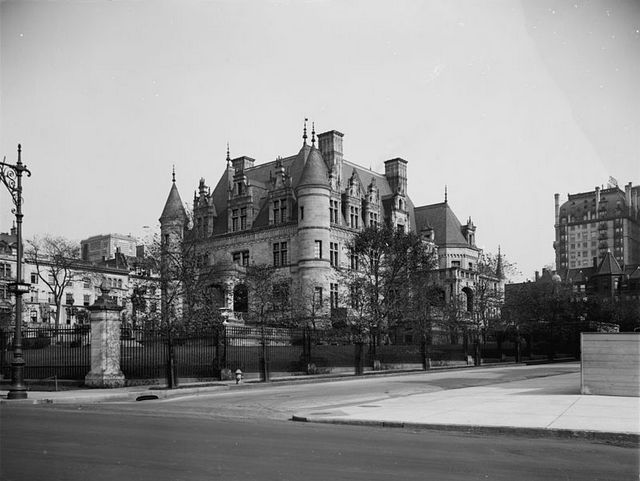9. The Upper West Side had its own row of mansions

While many are familiar with the Gilded Age mansions of Fifth Avenue, which were found for the most part in Midtown, a few mansions extended up to the Upper West Side. Perhaps the most famous was the Charles M. Schwab House, a 75-room mansion between 73rd and 74th Streets. It was constructed for Schwab, who grew Bethlehem Steel to the second-largest steelmaker in the United States. The mansion was considered one of the most prominent “white elephants,” or exquisite homes built on the “wrong” side of Central Park away from the elegance of the Upper East Side. The Beaux-Arts home included a mix of pink granite features and took inspiration from three French Renaissance châteaux. Quite hilariously, Schwab’s former boss Andrew Carnegie, whose mansion became the Cooper-Hewitt Museum, quipped that Schwab’s home made his look like a “shack.”
Also on the Upper West Side was the Apthorp mansion, named after Charles Ward Apthorp, a member of the Governor’s Council during the American Revolution. Built just west of 91st Street and Columbus Avenue, the 168-acre home overlooked the Hudson River and was taken over by both American and British soldiers. Apthorp died in 1797, and the home was contested for decades between his children. Eventually, it became a dance and beer saloon, and it was also one of the sites of the Orange Riots of 1870. Other notable mansions include the Dr. Valentine Mott Mansion, named for a celebrated surgeon, on 93rd Street.





